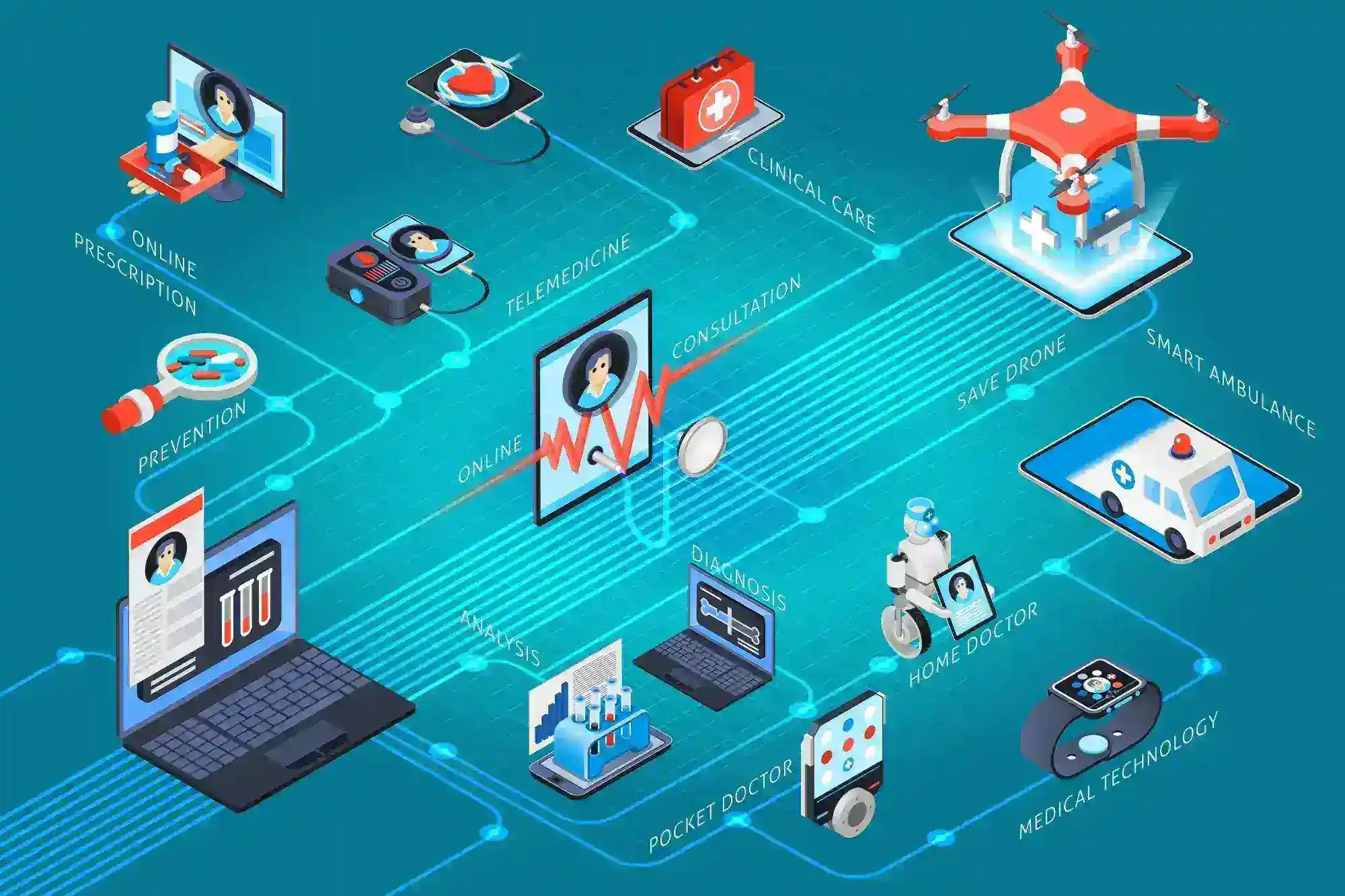Public health surveillance is the backbone of effective health systems worldwide. It helps us track diseases, monitor outbreaks, and ensure that we have timely and relevant data to make informed decisions. With the advent of artificial intelligence (AI), the landscape of public health surveillance is undergoing a remarkable transformation. This article dives deep into how AI enhances public health surveillance, exploring its applications, benefits, challenges, and future potential.
Understanding Public Health Surveillance
What is Public Health Surveillance?
Public health surveillance involves the systematic collection, analysis, and interpretation of health-related data. It’s like having a radar system that helps detect and respond to health threats. By monitoring trends, public health officials can intervene before small issues escalate into larger public health crises.
Key Objectives of Public Health Surveillance
- Early Detection of Outbreaks: Identifying unusual patterns or spikes in disease incidence.
- Monitoring Disease Trends: Observing changes in the prevalence and incidence of diseases over time.
- Informing Public Health Policies: Providing data to support decision-making and resource allocation.
- Evaluating Control Measures: Assessing the effectiveness of interventions and programs.
The Role of AI in Public Health Surveillance
1. Data Collection and Integration
One of the most significant ways AI enhances public health surveillance is through improved data collection and integration.
Automating Data Collection
AI tools can automate the gathering of health data from various sources, such as:
- Electronic Health Records (EHRs): AI algorithms can extract data from EHRs, providing real-time insights into patient health trends.
- Social Media: Platforms like Twitter and Facebook can be monitored using AI to identify public sentiment and early warnings about health concerns.
- Wearable Devices: Data from fitness trackers and smartwatches can be aggregated to monitor community health metrics.
2. Predictive Analytics
Forecasting Disease Outbreaks
AI can analyze historical data and identify patterns to predict future outbreaks. By leveraging machine learning models, public health officials can forecast disease spread and assess the potential impact.
- Example: During the COVID-19 pandemic, AI models were used to predict spikes in cases based on mobility data and health trends.
Risk Stratification
AI algorithms can stratify populations based on risk factors, helping health authorities target interventions more effectively. This allows for tailored responses that can mitigate the spread of diseases in vulnerable populations.
3. Enhanced Surveillance Systems
AI technologies improve traditional surveillance systems, making them more efficient and effective.
Real-Time Surveillance
AI-powered tools can analyze data in real-time, enabling rapid responses to emerging health threats. This immediacy is crucial during outbreaks, where timely intervention can save lives.
Integration with Geographic Information Systems (GIS)
AI can integrate health data with GIS, visualizing outbreaks geographically. This provides public health officials with valuable insights into where interventions are needed most.
| AI Application | Description | Benefits |
| Real-Time Monitoring | Constantly analyzes data from multiple sources | Rapid response to emerging health threats |
| Predictive Analytics | Identifies trends and forecasts future outbreaks | Improved preparedness and targeted interventions |
| Geospatial Analysis | Visualizes data on maps to identify hotspots | Enables effective resource allocation |
4. Natural Language Processing (NLP)
Natural Language Processing (NLP) is a vital branch of artificial intelligence that plays a significant role in extracting valuable insights from unstructured data sources, particularly text. NLP algorithms are designed to process vast quantities of text data derived from various channels, including news articles, clinical notes, and social media posts. By analyzing this data, public health officials can achieve several critical objectives. For instance, NLP can help detect outbreaks early by identifying mentions of disease symptoms or unusual health events in news reports or social media conversations. Additionally, it allows officials to monitor public sentiment, providing insights into community attitudes and concerns regarding health issues. This understanding can greatly inform communication strategies and public health campaigns. A prime example of NLP in action occurred during the early days of the COVID-19 pandemic when researchers utilized NLP techniques to analyze tweets for symptoms associated with the virus. This innovative approach enabled them to track potential outbreaks even before formal reports were made, illustrating the power of NLP in enhancing public health responses.
5. Machine Learning in Epidemiology
Machine learning represents another powerful application of AI that can significantly bolster epidemiological research and public health surveillance efforts. Through the analysis of extensive datasets, machine learning algorithms can uncover hidden patterns and correlations in health data that may elude human analysts. This capability leads to more accurate risk assessments, as AI can evaluate a range of factors—such as demographics, environmental influences, and genetic predispositions—to create precise risk profiles for various diseases. Furthermore, machine learning facilitates customized interventions by allowing public health officials to target specific populations based on their unique risk factors, thereby enhancing the effectiveness of public health strategies. Another critical application of machine learning lies in improving disease modeling. AI models can simulate the spread of diseases under different scenarios, helping public health officials understand the potential impacts of various interventions, such as vaccination campaigns, social distancing measures, and health messaging. By providing these insights, machine learning becomes an indispensable tool for planning and executing public health initiatives effectively.
Machine Learning Applications in Public Health
| Application | Functionality | Impact |
| Predictive Modeling | Simulates disease spread under various conditions | Informs resource allocation and intervention timing |
| Risk Prediction | Identifies at-risk populations based on historical data | Targets public health initiatives more effectively |
| Trend Analysis | Monitors disease trends and patterns over time | Guides policy decisions and public health responses |
6. Ethical Considerations in AI Surveillance
While AI holds immense promise for public health surveillance, ethical considerations must not be overlooked.
Data Privacy Concerns
With the integration of AI and data collection, ensuring patient privacy is paramount. Here are some key points to consider:
- Informed Consent: Individuals should be informed about how their data will be used and have the option to opt out.
- Data Security: Robust measures must be in place to protect sensitive health information from breaches.
Bias and Fairness in AI Models
AI algorithms can inadvertently perpetuate biases present in training data, leading to unequal health outcomes. Public health officials must ensure that AI models are trained on diverse datasets to avoid these pitfalls.
- Regular Auditing: Continuous evaluation of AI models for bias and inaccuracies is essential to ensure fairness in public health surveillance.
7. Collaboration Across Disciplines
Bridging Gaps Between AI and Public Health
To maximize the benefits of AI in public health surveillance, collaboration between technologists and health professionals is vital.
- Interdisciplinary Teams: Combining expertise in AI, epidemiology, and public health can lead to innovative solutions.
- Shared Goals: Establishing common objectives among stakeholders ensures that AI initiatives align with public health priorities.
8. The Future of AI in Public Health Surveillance
Emerging Technologies
As technology evolves, the potential applications of AI in public health surveillance will continue to expand. Here are some trends to watch:
- Wearable Health Technology: Devices that monitor vital signs in real-time could provide invaluable data for public health surveillance.
- Blockchain for Data Integrity: Utilizing blockchain technology can enhance data security and integrity, ensuring that health data remains accurate and trustworthy.
Integration with Global Health Initiatives
AI has the potential to enhance global health initiatives by:
- Strengthening Disease Surveillance: Collaborative AI efforts can bolster disease surveillance in low-resource settings.
- Improving Vaccine Distribution: AI can optimize vaccine distribution by predicting demand and identifying target populations.
9. Real-World Examples of AI in Action
Case Study: COVID-19 Response
During the COVID-19 pandemic, several countries harnessed the power of AI to bolster public health surveillance significantly. One of the prominent applications was contact tracing apps. These AI-powered tools tracked potential virus exposure by analyzing users’ movements and notifying them in real-time about any interactions with confirmed cases. This proactive approach aimed to curb the virus’s spread by quickly identifying and isolating affected individuals. Additionally, predictive modeling played a crucial role during this crisis. Researchers utilized AI algorithms to forecast potential case surges, which enabled governments to effectively allocate resources, implement necessary restrictions, and plan public health responses. By anticipating outbreaks, officials could make informed decisions that potentially saved lives and reduced strain on healthcare systems.
10. Case Study: Influenza Surveillance
AI’s contribution to public health is also evident in the realm of influenza surveillance. The FluView system, employed by the Centers for Disease Control and Prevention (CDC), utilizes AI algorithms to analyze data from electronic health records (EHRs) and outpatient visits. This integration enhances the monitoring of flu activity by identifying patterns and trends in real time, allowing for a more responsive public health strategy. By leveraging diverse data sources, AI improves the accuracy and timeliness of influenza surveillance, facilitating prompt responses to outbreaks. This application of AI not only aids in managing flu seasons but also serves as a model for how similar techniques can be employed for other infectious diseases.
Challenges Ahead
Despite the considerable promise of AI in public health surveillance, several technical limitations present significant challenges. One major issue is data quality; inaccuracies or gaps in the data can lead to flawed AI models, resulting in unreliable conclusions that could misinform public health decisions. Furthermore, there are integration issues; ensuring that AI systems work seamlessly with existing public health infrastructures can be a complex and resource-intensive process. These challenges necessitate ongoing efforts to improve data collection methods and ensure compatibility with current systems to fully realize the benefits of AI.




